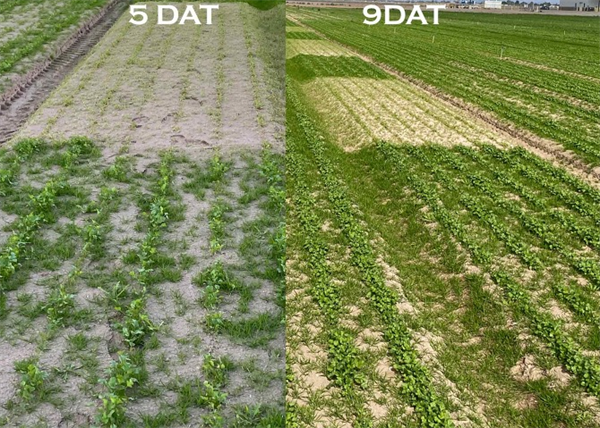Jan 25, 2023
Soil Health – A Brief Introduction
Soil health involves the fundamentals associated with soil, crops, and overall agricultural management practices that serve to enhance good soil system function. The concept of soil health basically addresses how well a soil is functioning. A simple analogy is with human health and as we see with a healthy person there is good overall system function and there are many interactive components in soil systems, like the human health system.
Soil health has been defined by the U.S. Department of Agriculture Natural Resource Conservation Service as “The continued capacity of a soil to function as a vital living ecosystem that sustains plants, animals, and humans” (USDA-NRCS, 2022).
The principles of soil health include soil quality parameters that serve to maximize biodiversity, soil cover, encouraging strong plant root system development, reduced tillage and practices that minimize soil disturbance, and will develop good soil conditions that are conducive to better infiltration and soil water holding capacity, sequester carbon (C), improve nutrient cycling, enhance ecosystem services, and many other benefits that are associated with healthy soils. Thus, soil health represents an extremely broad set of concepts and functions, and it is a good way to present the holistic aspects of soil systems.
As an agronomist and soil scientist working professionally for over 45 years, I find it interesting that what is now commonly referred to as “soil health” might be a new term but it is not a recent discovery. What is often referred to as soil health has often been described for many years as “soil quality” (NRCS, 2015).
Soil quality is the ability of a soil to perform the basic functions necessary for its intended use. These soil system functions typically include:
● sustaining biological diversity, activity, and productivity
● regulation of water and solute flow
● filtering, buffering, degrading organic and inorganic materials
● storing and cycling nutrients and carbon
● providing physical stability and support
Soils have been recognized as living entities for many decades and we commonly address soil function in terms of the three categories of physical, chemical, and biological properties. However, these categories overlap in function and are not always clearly defined as an independent soil property in a soil system since each can affect multiple soil functions.
Thus, soil health serves to integrate the dynamic functions of a soil system among the physical, chemical, and biological properties associated within a given soil system (Figure 1).

Figure 1. Soil health and the integration of fundamental soil
properties. Source: University of Tennessee Cooperative Extension.
One of the principal aspects of soil health is the emphasis on the relationship between soils and soil systems to human health via the function of soils as a fundamental component of terrestrial ecosystems, Figure 2.

Figure 2. The broad and integrated aspects of soil health and relationship to human health. Source: van Es and Frost, 2016.
In agricultural systems these relationships are commonly recognized but this new emphasis is good in my view because of the capacity to bring the importance of soil systems into a better realm of understanding and appreciation by the public and non-agriculturalists who have never really thought about this before. It is also important for us to recognize that whatever we do to impact a soil system in one aspect, it will have impacts on other aspects as well.
The study of soil fertility in the context of soil-plant relationships has often served to integrate the physical, chemical, and biological properties in relation to plant or crop growth. The concepts of soil health commonly place an emphasis on soil carbon (C) content, particularly in relation to stable organic carbon (SOC). This is related to the common reference to soil organic matter (SOM) content in soil health discussions.
It is important to distinguish the difference between organic materials and organic matter in soils. Organic materials include crop residues and SOM is the stable, residual forms of C compounds left in soils following microbial decomposition. For example, after the harvesting of a crop the crop residues are organic materials and they do not equate to SOM. The SOM is the final result of the crop residue breakdown and it is usually a very small fraction of the total organic material that was originally deposited.
Soil organic C represents the net balance of inputs and outputs of C to the soil over time. Inputs of C into a soil system consist largely of root exudates, residues of leaves, stems, and roots, and it also includes the deposition of materials transported by wind and water. In agricultural systems these inputs can include organic amendments such as manure, compost, biosolids, biochar, etc. to supply nutrients or organic matter.
Inputs of C into the soil system are counterbalanced by the C outputs which are dominated by the mineralization of SOC to carbon dioxide by microbes. In an agricultural soil system, microbial degradation and the transformation of plant inputs creates a complex of microbially derived organic compounds in the soil (Grandy and Neff, 2008). Outputs also include any harvested crops, residue burning and erosion.
Typically, soil health measurements focus on the soil surface properties, usually the upper foot (30 cm) of the soil surface. Thus, the transport of C deeper into the soil profile by water or tillage pedoturbation would result in a decrease in the measured SOC in the surface.
In a desert agricultural setting, it is important to review the basics of C cycling in soil systems as shown in Figure 3.

Figure 3. Soil carbon cycle. Source: Lavallee and Cotrufo, Colorado State University, 2020.
Desert crop production systems can produce large amounts of organic material, plant structures and residues. However, much of the C captured in plant residues and incorporated into the soil is soon lost to the atmosphere due to the high amounts of solar energy inputs, an abundance of soil microbes, with sufficient soil moisture and aeration as a function of good soil drainage, and a good nutrient supply (particularly nitrogen).
These are all functions of healthy soils, which are common in desert agricultural settings. The result is a relatively low level of stable organic matter (SOM), usually less than 2% on a soil mass basis and most often ~ 1% or less in desert agricultural soils. Even if difficult, trying to enhance SOM accumulation in desert soils is a worthy goal.
It is important to understand the basic concepts and complexities associated with soil health and to consider agronomic aspects (soil and crop factors) of soil and crop system management that serve to enhance healthy soils for both short and long-term productivity and sustainability.
References
Lavallee, J. and F. Cotrufo, 2020. Soil carbon is a valuable resource, but all soil carbon is not created equal. The Conversation and Colorado State University, 2020.
https://theconversation.com/soil-carbon-is-a-valuable-resource-but-all-soil-carbon-is-not-created-equal-129175
Grandy, A.S., Neff, J.C., 2008. Molecular C dynamics downstream: the biochemical
decomposition sequence and its impact on soil organic matter structure and
function. The Science of the Total Environment 404, 297–307.
https://doi.org/10.1016/j.scitotenv.2007.11.013.
USDA-Natural Resource Conservation Service (NRCS). 2015. Soil Quality Indicators Physical, Chemical, and Biological Indicators for Soil Quality Assessment and Management.
https://www.nrcs.usda.gov/sites/default/files/2022-10/indicator_sheet_guide_sheet.pdf
USDA-NRCS. 2022. https://www.nrcs.usda.gov/wps/portal/nrcs/main/soils/health/
van Es, H. and P. Frost. 2016. Gaining Ground on Soil Health. Tata Cornell Institute.
https://tci.cornell.edu/?blog=gaining-ground-on-soil-health

 To contact John Palumbo go to: jpalumbo@ag.Arizona.edu
To contact John Palumbo go to: jpalumbo@ag.Arizona.edu













